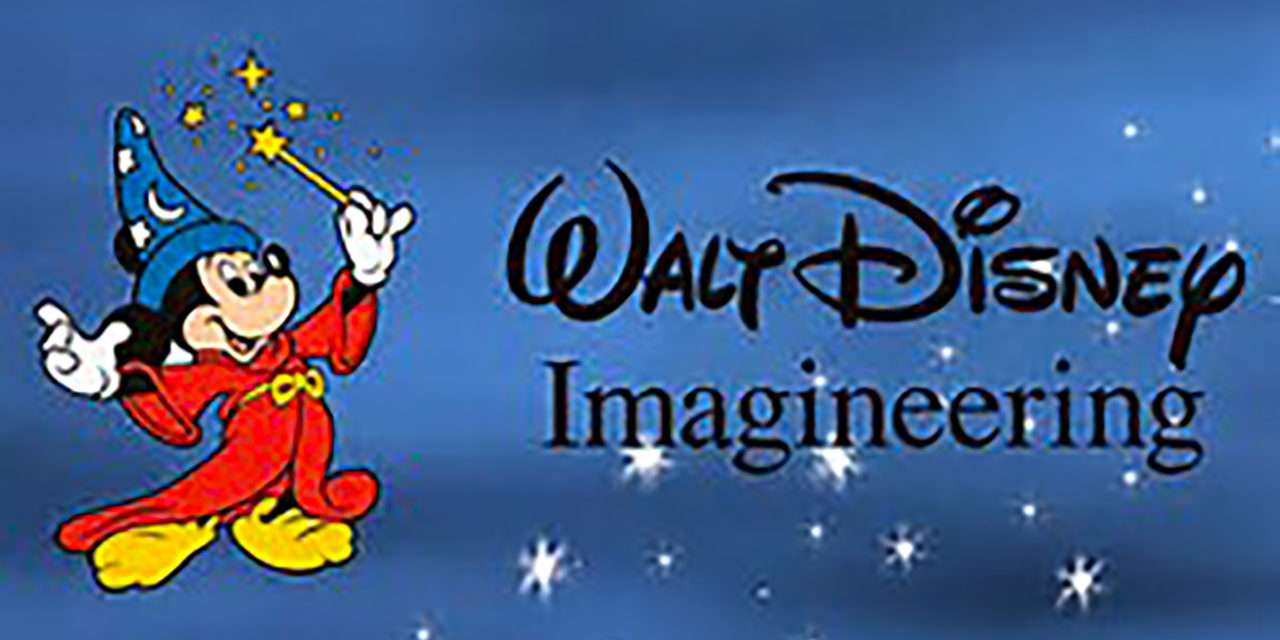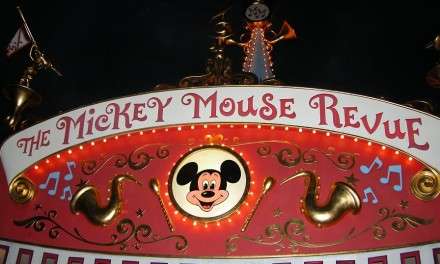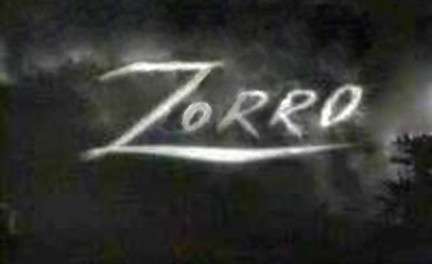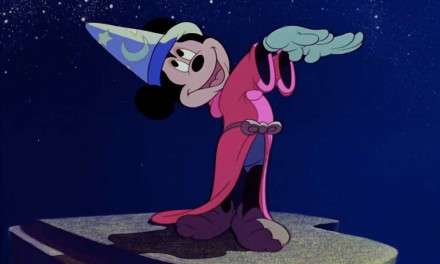I’ll never forget when my wife and I moved down to Florida eleven years ago. It was just the second day here we took a short drive to the Disney Casting Center to apply for Cast Member positions at Walt Disney World. My Disney dream job was that of a Jungle Cruise Skipper! Why? Because for me that attraction embodies everything a Walt Disney attraction should be…Fun, immersive, and a chance to interact with the Skipper of the boat. It is just a classic that never gets old. My wife was hired on the spot, but there was no opening for “Skipper” at the time, and other disquiets reared their heads, so I never got the chance to take my “Dream Job”
But I believe that any true “Disney Fanatic”, including myself believes the Holy Grail of Disney positions is that of “Imagineer”! The name itself conjures up images of accomplishment, problem-solving, creativity and Magic Making! Most people and many fans believe that you have to member of Mensa or climb to other lofty plateaus to become part of this elite group of thinkers and doers, therefore it seems out of reach for the regular Cast Member. So just how did this, the research and development arm of The Walt Disney Company come into being?
One would believe that the formation of this branch of the company would have been Walt’s idea, but his brother, Roy O. Disney was the man behind the notion. In the summer of 1951, Roy Disney wanted to purchase the rights to the “Wizard of Oz” books, penned by the late L. Frank Baum. Roy learned that the heirs of Baum did not have the rights to the books. Roy was dismayed, and it got him to thinking about Walt. Roy had always tried to protect Walt from the studio pressures and the studio from Walt, and he found a way to do so. One must remember that at this time in Walt’s life, despite the relative success of the studio and its product, he was in anguish. The studio and he never recovered from the 1941 animators strike, which lasted five weeks and forever tore apart the social foundation of the studio. It was still feeling the effects of WWII, all which added to Walt’s gloom. He missed the exhilarating days of collaboration and that he felt the animations would never return. He missed those days tremendously, when he and his neophyte staff produced the first Mickey Mouse cartoons or labored together on Snow White.
But Walt was also in the process at this time of planning Disneyland. This did reenergize him, but he needed something else. With the Baum situation in mind, Roy wanted to protect Walt and to protect his rights for his own family. He suggested that Walt sell his name to the Company, provided that payment is viewed as Capital gain for tax purposes. He also said Walt should offer the studio a ten-year personal services contract since the last one expired in 1947 and was not renewed. Roy reasoned that since the company used Walt Disney’s name “in ways that bring us a lot of revenue”, and “I feel keenly that the Company should have this right beyond any doubt in place of going along as we are now on the basis of indulgence on your part”- recognition that the name Walt Disney was now just as valuable as the man. On December 16th, 1952, Walt finally formed Walt Disney, Inc. (WDI). Its first resolution was to produce TV shows, and in 1953 its name changed to WED Enterprises, Walt’s initials. Although Roy emboldened WED to protect Walt’s interests and his name and services, Walt had envisioned something very different for his new company he now owned outright and the organization could develop and create his new Disneyland park.
His new company was now a guarded place inside the studio, but not part of the studio. The office was inside a small bungalow in a corner of the studio lot. It brought back to Walt back to the days of the Hyperion studio and knowing that he was going to make history. Immediately Walt hired Lilian’s brother-in-law Bill Cottrell as the first company employee to begin work on Disneyland Park. Since business was slow at the studio, and instead of laying people off, Walt now had machinists, animators, layout artists, and even animator John Hench was added to the crew, all on his personal payroll. Walt never liked the fact that his company went public, he loathed the idea of giving up control to stockholders and the like, now with WED, he was in control again. This independent company, owned by Walt Disney himself was eventually joined into Walt Disney Productions on February 3rd, 1965…The unit was renamed as of January 1986 to Walt Disney Imagineering and is currently known as Walt Disney Imagineering, Disney Imagineering, or solely Imagineering.
The company was again formed separately from Walt Disney Productions in order to keep business affairs apart. WED was originally necessitated by the design of the Walt Disney live action TV shows, this is when WED and Walt Disney Studios became closer. In 1952, with Disneyland coming closer to fruition, Walt and Roy formed the company Disneyland, Inc. to build and design and manage the future park and to produce the television show, Disneyland. Eventually, Disneyland Inc. was melded into WED Enterprises and WED became a division of Walt Disney Studios, today is known as the Walt Disney Company.
It is interesting to note that the word “Imagineering” is a hybrid or portmanteau word that combines the words “imagination” and “engineering”, however, the term was not coined by Walt Disney or his company. The was “invented” by the Alcoa Aluminum Company in 1940. After the war, Alcoa evoked an internal “Imagineering” program to utilize innovative usage of aluminum to keep up with demand. A Time magazine ad from February 16, 1942, titled “The Place They Do Imagineering” relates the origin. In 1891, a book with the title Imagineering, penned by Serge King was published by Quest Books in Wheaton, Illinois. WED Enterprises applied for a trademark for the term in 1967, claiming first use in 1962.
Today, Walt Disney Imagineering is now the research and development arm of Walt Disney Parks and Resorts and as such is no longer a division of Walt Disney Productions. Imagineering also includes Walt Disney Creative Entertainment, the company which utilizes Imagineering techniques among others to create shows, fireworks displays, and parades at the Disney theme parks which are significant enough not to be developed by the entertainment studios at that theme park. This arm of Disney is presided by several key principles. Many concepts and advancements are created to fulfill specific needs. An example is the ride Soarin’ Over California. The problem was having guests experience the sensation of flying, but not sure of a vehicle and a loading system, along with a prime viewing seat. An Imagineer, Mark Summer devised and designed such a workable vehicle using an old Erector set, which parroted hang gliding. The story of Disney theme parks is often told visually, and the Imagineers design the guest experience in what they call “The Art of the Show.”
Imagineers also utilize ideas for projects and shows that never came to be, reworking and tweaking these ideas. Example, the proposed Museum of the Weird walk-through wax museum, morphed into the Haunted Mansion. Another principle is the “Blue Sky Speculation”, ideas with no limitations. Using the wildest and boldest ideas you can conjure up, this is where the notion of “If it can be dreamt, it can be built” Mickey Steinberg, vice-president of Imagineering in 1991 presented his ten commandants for Imagineering, which are…1-Know your audience 2-Wear your guest’s shoes (don’t forget the human factors; try to experience the parks from the guests’ point of view 3- Organize the flow of people and ideas (ensure experiences tell a story that is organized and logically laid out) 4-Create a “Wienie” (Walt Disney’s term for a “visual magnet”) 5-Communicate with visual literacy (use a dominant color or shape or building to reinforce a theme) 6-Avoid overload—create turn-ons (do not offer too much detailed information. 7-Tell one story at a time (put one ‘big idea’ in each show so guests leave with a clear understanding of the theme) 8-Avoid contradictions—maintain identity (avoid irrelevant or contradicting elements; make sure the audience has a clear idea of what is being said) 9-For every ounce of treatment, provide a ton of treat (take advantage of the distinction of the theme park, which is that it encourages active participation, compared to passive entertainment) 10-Keep it up (do not become complacent or allow things to run down).
The accomplishments of this extraordinary branch of the Disney Company is second to none. They have amassed over 100 patents in fiber optics, audio systems, ride systems, interactive technology, live entertainment and special effects. Among the most well-known are Circle-Vision 360deg and the Fast pass queuing technology. They are perhaps best known for the advancement in Audio-Animatronics. From the first crude mechanical bird that Walt obtained in New Orleans, which helped develop the first use of the technology, in the Enchanted Tiki Room, featuring singing Audio-Animatronic birds. This of course let to the “Great Moments with Mr. Lincoln” at the Illinois state pavilion at the ’64 World’s Fair, with Walt’s personal hero Abraham Lincoln reciting part of the Gettysburg Address, the first working human Audio-Animatronic figure. Today, the most popular ride attractions boast Audio-Animatronics…Country Bears Jamboree, Muppet Vision 3d, Hall of Presidents and the Haunted Mansion to name a few.
Imagineering has created four cruise ships, 12 theme parks, resort hotels, sports complexes, shopping centers and water parks. Disney’s Castaway Cay is an outstanding example of their expertise. The new Fantasyland expansion with the Seven Dwarfs Mine Train and Princess Fairytale Hall. The New Dumbo double ride and countless other aspects in the parks many just take for granted. Imagineering is behind the amazing range of retail stores, hotels, and galleries. They, like Walt himself, have developed the art of storytelling, visiting a Disney Park is like entering and being part of a show. The details and devices all add to this mystic, much like the art of forced perspective, making the building appear larger than they are. Even the design of the Cast Members costumes adds to the magic. No detail, large or small is omitted.
Another arm of Imagineering is Walt Disney Creative Entertainment, developer of theatrical live entertainment, shows, and parades, i.e. Fantasmic, Aladdin, Lion King Parade, Frozen and many more. Disney Creative Entertainment was founded in 2000 with the arrival of Executive Vice President Anne Hamburger. It is amazing how a company first envisioned to protect Walt and his family has grown to such prominence and importance to the Walt Disney Company. Without their constant striving to, like Walt to improve and “Pluss” everything they touch, we would probably experience a completely different Disney Company today. In closing here is a phrase explaining the Imagineer’s Approach … “How many Imagineers does it take to change a lightbulb? The answer…Does it have to be a lightbulb? Imagineers take the notion of thinking outside the box way beyond its limits.”
The story of Disney theme parks is often told visually, and the Imagineers design the guest experience in what they call “The Art of the Show.”





